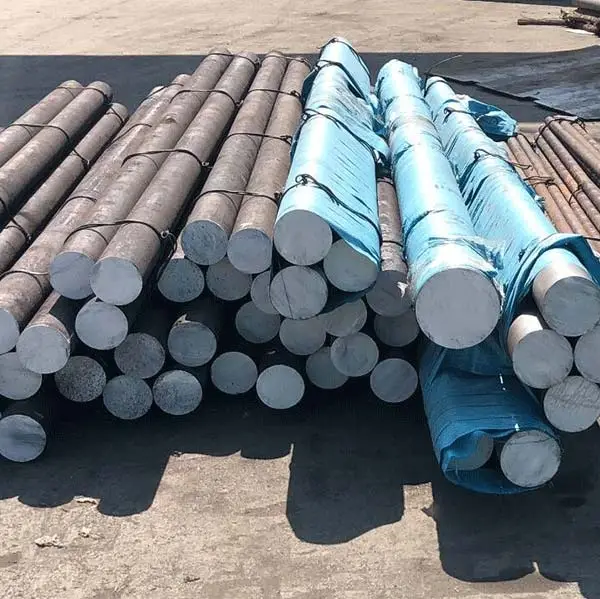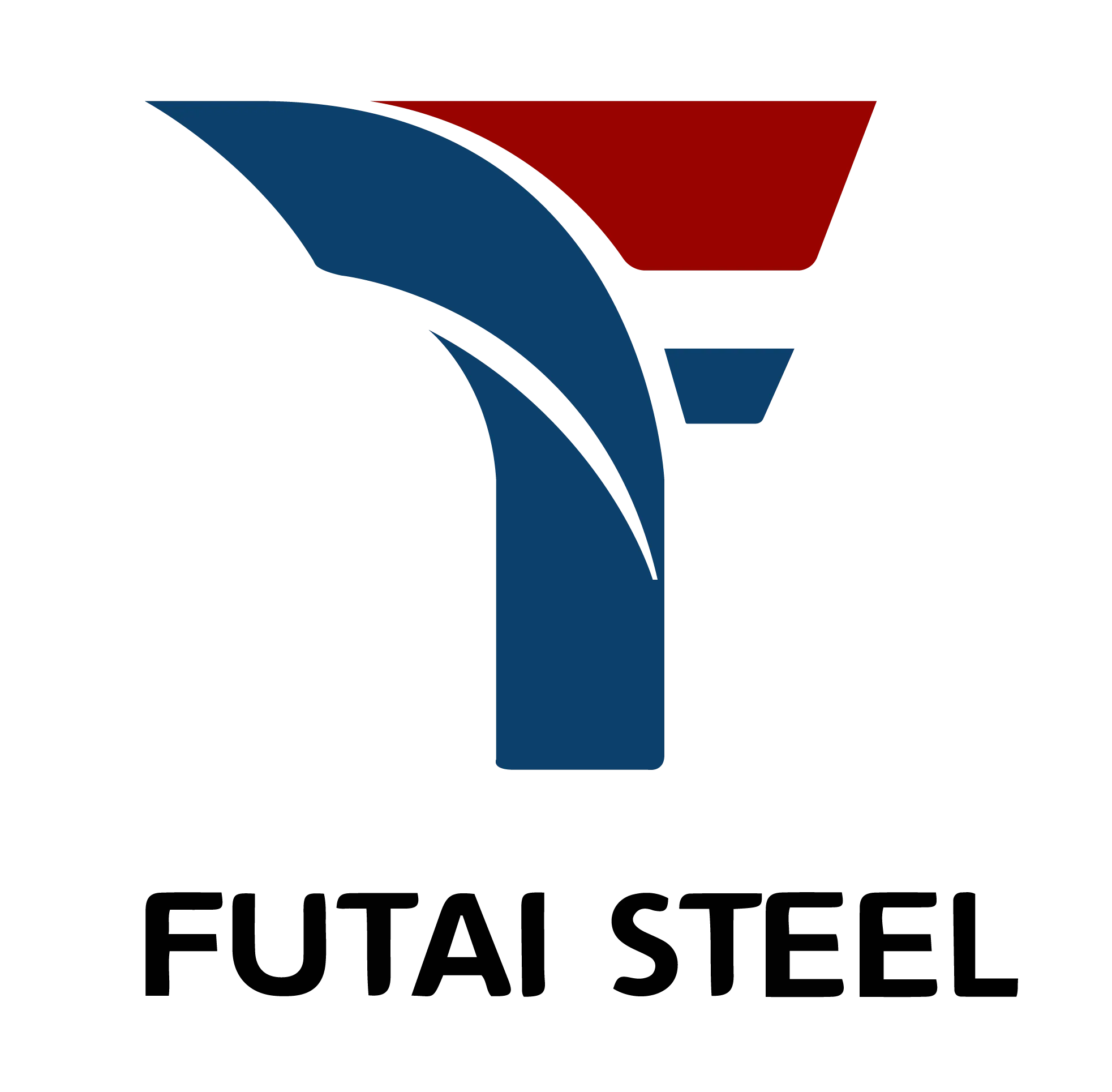Table of Contents
Introduction

When it comes to industrial applications, carbon steel rods are among the most commonly used materials due to their outstanding properties and cost-efficiency. These rods are used across a variety of sectors, from manufacturing and construction to automotive and heavy-duty machinery. With their ability to withstand heavy loads, resist wear and tear, and be easily fabricated and welded, carbon steel rods are essential for ensuring the success of any industrial project.
In this blog, we will explore 10 key advantages of carbon steel rods and why they are the go-to solution for various industrial needs. By understanding their strengths and characteristics, you can make a well-informed decision on whether carbon steel rods are the right material for your upcoming project.
What
Carbon steel rods are solid bars made primarily of carbon steel, which consists mainly of iron and a controlled amount of carbon. The carbon content in the steel can vary, typically ranging from 0.05% to 2%, with higher carbon levels resulting in stronger and harder steel. The rods are used in many applications where high tensile strength and durability are required. Due to their high strength-to-weight ratio and versatile characteristics, carbon steel rods are manufactured in different grades, sizes, and shapes to meet the specific needs of industries such as construction, automotive, oil and gas, and manufacturing.
These rods are often available in various grades, including low, medium, and high-carbon steel, with each type providing distinct properties, such as increased strength, wear resistance, or malleability. Now let’s take a closer look at the advantages of carbon steel rods.
NO 1. High Strength and Durability
The strength of these steel rods is one of their defining characteristics. Carbon steel, particularly with higher carbon content, exhibits impressive tensile strength. As a result, these rods can endure heavy loads, resist pressure, and withstand stress without bending or breaking. This makes them an ideal choice for heavy-duty applications, such as structural reinforcement, beams, and foundations in the construction industry.
Benefits:
- Enhanced Load-Bearing Capacity: The high tensile strength enables these rods to bear substantial loads, minimizing the need for frequent replacements in critical applications.
- Long-Lasting Performance: Thanks to their strength and resilience, these rods remain effective over extended periods, even in challenging environments, providing a longer lifespan for machinery and structures.
- Ability to Withstand Harsh Conditions: Ideal for tough industrial environments where other materials might fail.
Examples:
- Construction: Used as reinforcement in concrete and steel frameworks.
- Machinery Parts: Applied in components that require structural integrity, such as shafts, gears, and axles.
NO 2. Cost-Effective Solution
When it comes to budget-friendly materials, these steel rods are often the most affordable choice. While materials like stainless steel may offer superior resistance to corrosion, they come with a higher price tag. On the other hand, carbon-based rods provide an excellent balance between cost and performance, making them ideal for industries that need reliable material without breaking the bank.
Why it’s cost-effective:
- Affordable Raw Material: Carbon steel rods are made from abundant resources, making them more affordable compared to other metals like stainless steel, which can be cost-prohibitive.
- Low Maintenance Cost: Their ability to withstand heavy use and resist wear means you don’t need to replace them frequently, saving money on maintenance and replacements.
- Reduced Operating Costs: Since carbon steel rods are easy to fabricate and install, the associated labor costs for fabrication are generally lower compared to other materials.
Industries that Benefit:
- Automotive Manufacturing: Carbon steel rods are frequently used in vehicle production due to their strength, low cost, and machinability.
- Construction: Structural steel rods used in buildings, roads, and bridges.
NO 3. Excellent Weldability

One of the major advantages of carbon steel rods is their excellent weldability. This feature makes them incredibly versatile for manufacturing and construction purposes. Whether you’re looking to join parts or create custom components, carbon steel rods are easier to weld compared to higher-alloy metals like stainless steel. This ease of welding reduces production times and costs while providing flexibility in design.
Why it’s advantageous:
- Customization: The rods can be welded to form longer sections or custom shapes, allowing for tailored solutions.
- Efficient Manufacturing: Easy welding speeds up the fabrication process, reducing the overall time to complete a project.
- Adaptability: Carbon steel rods can be welded into various configurations to meet specific project requirements.
Applications:
- Heavy Machinery: Construction equipment often incorporates carbon steel rods that can be welded together to form durable frames and supports.
- Fabrication Shops: Custom fabrication of carbon steel rods for industrial machinery.
NO 4. Corrosion Resistance
While carbon steel rods are susceptible to rusting when exposed to moisture, they can be protected with a variety of coatings, such as galvanization or powder coating, which enhances their corrosion resistance. These coatings ensure that carbon steel rods can withstand exposure to harsh weather conditions, chemicals, or moisture.
Why it’s important:
- Longevity: Protective coatings extend the lifespan of carbon steel rods, allowing them to maintain their functionality even in outdoor or high-humidity environments.
- Reduced Maintenance: A corrosion-resistant coating lowers the need for frequent repairs or replacements due to rust damage.
Common Coatings:
- Galvanization: Zinc coating is applied to provide long-term rust protection, commonly used for carbon steel rods in construction or outdoor applications.
- Powder Coating: This method involves applying a dry powder to create a protective layer that is resistant to both corrosion and abrasion.
NO 5. Versatility in Applications
Carbon steel rods are known for their remarkable versatility, making them suitable for a broad range of industries. From automotive components and tools to structural reinforcements and machine parts, the adaptability of carbon steel rods makes them indispensable in various industrial sectors.
Key Advantages:
- Flexible Design: They can be easily customized in terms of shape, size, and strength to fit a wide array of industrial applications.
- Multi-Purpose Use: Whether you need them for structural, mechanical, or decorative purposes, carbon steel rods can handle the job efficiently.
Industry Examples:
- Construction: Used in beams, supports, and structural reinforcements.
- Manufacturing: Ideal for shafts, axles, gears, and other mechanical components.
- Automotive: Engine components, exhaust systems, and chassis parts.
NO 6. Resistance to Wear and Tear
In many industrial applications, materials are exposed to high levels of friction and mechanical stress. Carbon steel rods are engineered to withstand significant wear and tear, making them an excellent choice for applications that require durable components, such as gears and mechanical parts. Their resistance to abrasion ensures that they continue performing well even under challenging conditions.
Why it’s advantageous:
- Extended Service Life: Carbon steel rods maintain their functionality over time, even when subjected to high levels of friction and wear.
- Cost Savings: The durability of carbon steel rods means fewer replacements and repairs, leading to reduced operational costs.
NO 7. High-Temperature Endurance
Many industrial environments involve exposure to high temperatures, and carbon steel rods are designed to perform well even under heat. Unlike some alloys that lose strength and durability at elevated temperatures, carbon steel rods retain their structural integrity, making them suitable for high-temperature operations in industries such as metalworking, manufacturing, and automotive.
Why it’s important:
- No Deformation: High-carbon rods do not deform easily at elevated temperatures, ensuring stable performance even in extreme conditions.
- Industrial Applications: Ideal for use in machinery that operates at high temperatures, such as engines, turbines, and ovens.
NO 8. Customizability and Shape Flexibility

Carbon steel rods are available in various shapes and sizes, making them highly customizable to meet specific needs. Whether you’re looking for round rods for shafts, square rods for structural elements, or hexagonal rods for special applications, carbon steel rods can be tailored to suit your project’s requirements.
Why it’s advantageous:
- Design Flexibility: The ability to easily shape carbon steel rods into various forms provides designers and engineers with more options for custom solutions.
- Adaptability: They can be tailored to suit different applications, such as machinery, structural elements, or consumer products.
NO 9. Easy to Maintain and Repair
Another key benefit of carbon steel rods is their ease of maintenance and repair. If damaged or worn, they can be easily repaired using welding or machining techniques. Since carbon steel rods are common and easy to work with, they don’t require specialized tools for repairs or maintenance.
Benefits:
- Simple Repairs: Easy to weld or machine, minimizing downtime and costs for repairs.
- Lower Maintenance Costs: The durability and ease of repair make carbon steel rods a long-term solution that reduces maintenance costs.
NO 10. Strong Structural Integrity
Finally, carbon steel rods are known for their strong structural integrity. Their ability to resist deformation under pressure makes them suitable for reinforcing structures or supporting heavy machinery. Whether you’re building bridges, creating machinery frames, or constructing residential buildings, carbon steel rods can offer the necessary support to ensure your project remains stable and secure.
Benefits:
- Safety: The robustness of carbon steel rods makes them a safe and reliable choice for structural applications.
- Reliability: Their strength ensures that structures stay intact under heavy loads, providing long-lasting stability.
Table: Key Specifications of Carbon Steel Rods
| Property | Low Carbon Steel | Medium Carbon Steel | High Carbon Steel |
|---|---|---|---|
| Carbon Content (%) | 0.05 – 0.25 | 0.25 – 0.6 | 0.6 – 2.0 |
| Tensile Strength (MPa) | 370 – 620 | 590 – 800 | 700 – 900 |
| Weldability | Excellent | Good | Fair |
| Hardness | Low | Medium | High |
| Common Applications | Construction, Automotive | Gears, Shafts, Machine Parts | Springs, Tools, Wear Parts |
Conclusion
Carbon steel rods provide a range of benefits, from high strength and durability to excellent weldability and cost-effectiveness. Their versatility makes them an essential material for many industries, and their resistance to wear and corrosion ensures long-lasting performance. Whether you’re in construction, manufacturing, or automotive industries, carbon steel rods should be at the top of your material list when looking for reliable and efficient solutions.
Understanding these advantages helps you appreciate why carbon steel rods are a go-to material for various industrial applications. If you’re looking for a material that combines strength, cost-efficiency, and adaptability, carbon steel rods are the perfect choice.
FAQ
What is the difference between low carbon steel rods and high carbon steel rods?
Low carbon steel rods contain a lower percentage of carbon, which makes them more flexible and easier to weld. In contrast, rods with a higher carbon content have increased tensile strength and hardness, but they are more challenging to weld and work with.
Are these rods resistant to rust?
While these steel rods are susceptible to rust and corrosion, protective coatings such as galvanization can help safeguard them. Regular maintenance and appropriate coatings will enhance their resistance to environmental factors.
Can these rods be used in high-temperature environments?
Yes, steel rods made from this material are highly durable and resistant to high temperatures. They are ideal for industrial plants and machinery operating under elevated heat conditions.
How can I improve the corrosion resistance of these rods?
Applying coatings such as galvanization or powder coating is an effective way to enhance the resistance of these rods to corrosion, especially in outdoor or marine environments.
